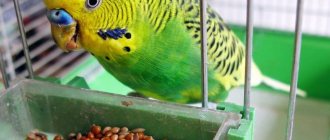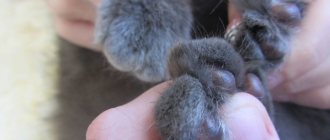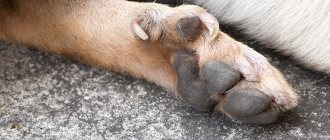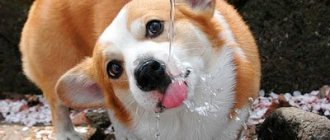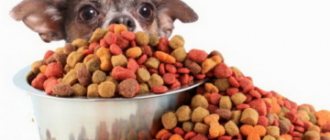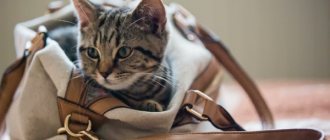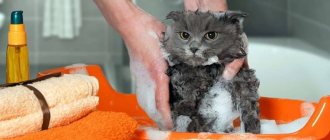The structure of the claws
The parrot's claw consists of 2 parts: the cornea and the pulp. The pulp is the soft inner part that contains blood vessels and nerve endings. The horny sheath is devoid of capillaries and nerves; it covers the soft part on top. It is the horny part that grows, and it should be cut off without damaging the soft tissue.
To determine the location of the cut, the claw is illuminated from the side with a flashlight. The pulp is located at the base, the blood capillaries reach approximately the middle of the claw, and at the end there is a dead horny part.
When claws grow excessively, the soft tissue area also increases, so when treating paws in advanced cases, you need to be especially careful. With regular trimming, the capillaries and pulp will gradually shrink, returning to normal.
All about the claws of the Corella parrot
Most owners come to the veterinarian with a problem such as long claws on their pet parrot. They want to help their feathered pet, but are afraid of harming or hurting them. Is it even worth trimming parrots' nails? After all, in their natural environment, cockatiels do not fly for pedicures! In nature, everything is quite natural; birds have to jump a lot on tree branches and often dig up the ground to find food. Such actions naturally wear down the claws. Ornithologists have even recorded cases where cockatiels independently bit off their claws.
There are no conditions at home that would cause the claws to wear down. In this case, the owner must put a piece of brick in the cage. The parrot will sharpen not only its claws, but also its beak. If you do not pay attention to their length, then over time the cockatiel may get injured. Most often, birds get their paws tangled in swings or scratch their skin and introduce infections into open wounds.
To prevent the growth of claws, it is recommended to purchase perches and ladders made of natural wood for parrots. Plastic products are not suitable for these purposes. Cockatiels also benefit from walks outside the cage. It is advisable to let them out every day so that they can fly and walk around the floor of the apartment. In this case, do not forget about safety; an open window can cause the loss of your feathered friend forever.
If a person notices that a parrot’s claws are too long, then it is worth getting rid of them. Pedicure requires not only scissors, but also special skills. Since this part of the parrot’s body contains nerve endings and even blood vessels.
Why do you need nail trimming?
In the wild, parrots wear down their claws naturally. In captivity, to avoid health problems for the bird, you need to trim your budgie's claws by hand. If this is not done, the following situations may arise:
- the parrot will experience discomfort when moving on flat surfaces due to improper loads on the paws;
- the parrot will not be able to sit correctly on the perch, due to which the paws will be deformed and diseases of the joints and bones will occur;
- a parrot can catch its overgrown claws on the bars of the cage, upholstered furniture, carpet, curtains or other fabric while walking around the apartment and injure its paw in attempts to free itself;
- when caring for feathers and trying to scratch itself, the parrot can injure itself;
- a long nail may break or split, causing bleeding and pain to the bird.
Do I need to trim my parrot's claws?
In the wild in their native lands, parrots, climbing trees and running on the ground, including over stones, grind off their horny endings on their paws in the most natural way. Living in a cage in a world of plastic perches and toys, birds are deprived of this, which is why their claws grow very long.
As a result, they find it difficult to climb, handle toys, and walk on level surfaces. In addition, due to careless handling of their horny ends that have grown to an unnatural length, parrots often injure themselves.
And another danger awaits the bird in such a situation due to the possibility of detachment of an overly long claw or its breakage and subsequent bleeding. Therefore, the owner needs to help the pet return the horny endings to a normal state, which cannot be achieved without pruning.
Natural claw sharpening
Parrots use their claws to move across various surfaces and to capture and hold food. In nature, the paws of parrots are subject to constant stress: birds run on the ground and stones, climb trees, pick and hold seeds and fruits. Constant contact with hard, rough surfaces quickly wears down the claws.
In captivity, parrots lead a sedentary lifestyle. Their paws come into contact only with perches, metal and plastic inside the cage, smooth table surfaces and upholstered furniture when walking. Lack of contact with rough surfaces prevents the normal grinding of the growing stratum corneum. The situation is aggravated by the absence of ropes and ladders made of natural materials in the cage, as well as the presence of plastic or polished wooden perches of small diameter.
How to trim a budgie's claws
You can determine whether a parrot needs its claws trimmed when the bird is standing on a flat surface, such as a table. If your fingers fit snugly to the table, no trimming is required. If the ends of the fingers rise above the surface, it means that the claws have grown too much and should be shortened.
Necessary equipment
It is more convenient to carry out the procedure together with an assistant, when one person holds the parrot and the other trims the claws. But, if the bird is calm, you can cope alone. To trim a parrot's claws at home, you need to prepare the following items:
- nail clipper (it is sold in pet stores and can be of various designs - in the form of a guillotine, nippers or scissors) or nail scissors;
- antiseptic solution;
- towel or gloves;
- cotton wool;
- hemostatic agent (hydrogen peroxide or potassium permanganate solution).
Manipulations are performed in a well-lit place. If the owner is performing the procedure for the first time, you should take a flashlight to illuminate the parrot's claws and find out where the blood vessels end.
Nail trimming procedure
The nail clipper or scissors are treated with an antiseptic solution. Put on gloves or take a towel and fix the parrot in your hand so that the wings are pressed tightly to the body and the head is located between the thumb and forefinger. In this position the bird will not be able to resist. At the same time, you should not squeeze the pet too much so as not to harm it.
After fixation, one finger of the parrot is carefully released and the claw is examined in transmitted light to determine the location of the blood vessel. The regrown tip is cut 2 mm below the capillary at an angle of 45°. The cut is made in one movement, avoiding delamination or breaking of the claw. It should not be too sharp, but not too blunt, so that the bird can easily move along vertical surfaces and sit on perches even immediately after performing the procedure. In this way, the claws on all fingers are cut, making sure that while processing one finger, others do not get caught in the mechanism of the tool. After trimming the parrot's claws, the parrot is praised and given a treat. The nail clipper or scissors are again treated with an antiseptic and put away for storage.
In advanced cases, when the claws have not been trimmed for a very long time and they have grown a lot, after the first trimming they may still remain too long, but the blood vessels will be located close to the cut. In this case, you should not rush and cut the nails too short - this can damage the pulp. The parrot should be placed in a cage with a large amount of materials on which it can grind its claws naturally. Gradually the pulp will decrease in size. After some time, the bird is examined again and the excess horny part is cut off. The procedure is repeated several times until the pulp returns to normal size.
Possible problems
No matter how hard the owner tries to carefully trim the budgie's claws, the bird may jerk and the cut will be higher than the desired area. If the pulp was touched and blood began to flow, you should quickly moisten cotton wool in hydrogen peroxide or a solution of potassium permanganate and press it to the wound. After a few seconds the bleeding will stop.
On a note! You can also apply 1-2 crystals of potassium permanganate to the cut, but remember that in large quantities this substance causes chemical burns.
Many birds experience stress during nail trimming, especially if the procedure is being performed for the first time. After the manipulations are completed, the parrot may be scared for some time, refuse to communicate and come to the owner’s call. Such changes in behavior will be especially pronounced if the bird was hurt during shearing. In this case, you should leave your pet alone for a while. You can offer him his favorite food or a new toy. After some time, the parrot will begin to trust its owner again.
Video material
For an inexperienced owner, trimming a budgie's long nails can seem daunting. The correct order of the procedure and the subtleties of the manipulations are presented in the video.
Why do you need to trim your parrot's claws?
A feathered pet at home cannot afford the activity that being in the wild promotes. For this reason, claws, deprived of natural abrasives, begin to grow, interfering with movement.
The need to trim a parrot's claws
The parrot is a neat bird. He constantly smoothes his feathers and cleans his head.
Overgrown nails can get stuck, which can lead to foot injuries. Gait is disturbed, which leads to the development of limb diseases. A long nail may break, causing pain to the bird.
Prevention of nail growth
To cut your parrot's claws less often, you should take care to grind them down naturally. To do this, all plastic structures inside the cage are replaced with wooden ones. Instead of plastic perches, untreated branches of fruit trees with bark are placed. Their diameter should be such that the bird grasps 3/4 of them; for a budgerigar it is approximately 15 mm. Hemp ropes, ladders and toys made of wood and other natural materials are placed in the cage. You can set up a play area with small pebbles, dry cones and pieces of bark.
Sometimes excessive growth of claws is caused by poor health of the bird or an incorrectly selected diet. In such cases, after eliminating the cause, the excessive formation of horny substance stops.

